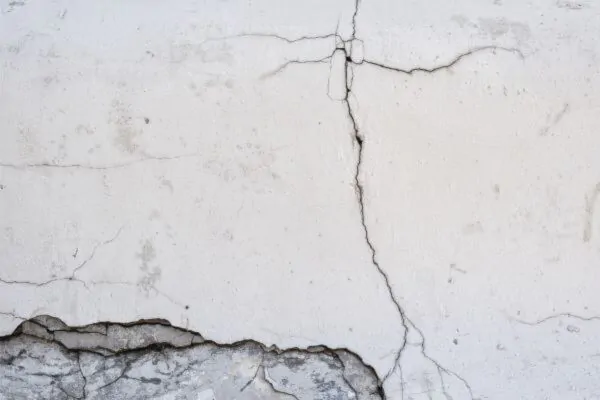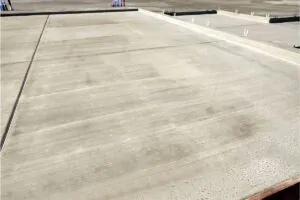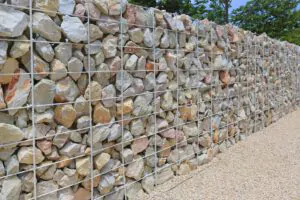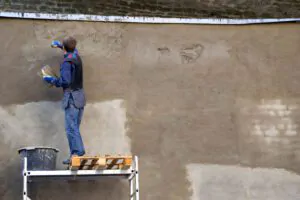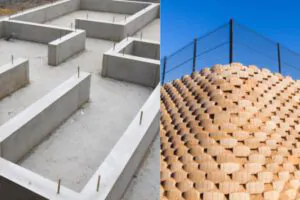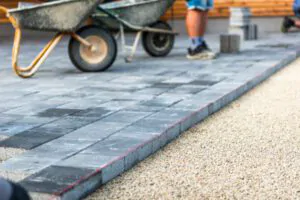You’ve seen it before—the unsightly cracks creeping along a sidewalk or bisecting a driveway. have you ever wondered, why does concrete crack? It’s easy to chalk up cracked concrete as an inevitable nuisance, but understanding and preventing these fractures is key to maintaining sturdy and appealing structures.
Concrete, despite its reputation for toughness, isn’t immune to breaking under stress. Factors ranging from water content to temperature play pivotal roles in its integrity over time.
This blog post will delve into why concrete gives way under seemingly benign conditions and how you can intervene early on. Stick around; this knowledge might just save your sidewalk and driveway!
Understanding the Fundamentals: Why Does Cement Crack?
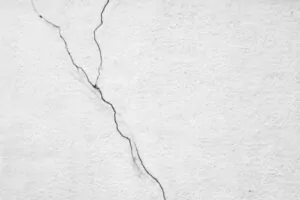
Cement cracks for several reasons, often related to the natural drying process. As concrete dries, it shrinks slightly. Without proper support and preparation, this shrinkage can lead to cracking.
Environmental factors play a role, too; variations in temperature cause materials to expand and contract, which adds stress to the hardened cement.
Mixing water is essential in cement creation, but too much can weaken the structure, leading to what causes concrete to crack as it cures. Accurate mixing ratios are crucial for durable concrete.
Poorly placed joints fail to manage tension effectively, creating weakened spots prone to cracking under pressure or movement. Understanding these dynamics helps prevent cracks in concrete by ensuring correct procedures and conditions from the start of any project.
Common Types of Concrete Cracks
From plastic shrinkage to structural cracks, various types of concrete cracks can occur due to different reasons. Understanding the common types of concrete cracks will help you identify and prevent them effectively.
Plastic Shrinkage Cracks
Plastic shrinkage cracks appear in concrete soon after it’s poured and before it hardens. These web-like fissures occur when the surface of your fresh slab loses moisture too quickly.
You might see them on hot days or when a brisk wind picks up, wicking away the water that’s essential for curing. To prevent these unsightly marks, keep your pour shielded from direct sunlight and strong breezes during those critical first hours.
Use damp burlap or a quality curing compound to lock in moisture.
You should also be mindful of how much water you mix into the concrete. Too little, and you get dry, brittle material prone to cracking; too much can weaken the slab and lead to more splitting as it dries.
So strike a balance – achieve a firm yet workable consistency for best results. By taking care with these early steps, you help ensure your concrete stays intact as it transitions from a plastic state to solid rock-hard strength.
Settlement Cracks
Settlement cracks in concrete occur when the ground beneath it shifts or settles unevenly after the concrete has been poured and hardened. This movement can be due to the soil compressing underweight, changes in moisture levels, or improper compaction before the pour.
You might see these types of cracks forming in a stair-step pattern along your home’s foundation or as vertical cracks on walls.
To prevent settlement cracks, ensure that your contractor properly prepares the base by compacting the soil and adding a layer of gravel for better stability. Also, consider using reinforcing materials like rebar or wire mesh within your concrete to provide additional support and help distribute any loads more evenly.
Allowing ample time for curing can also minimize stress on freshly paved surfaces, which might otherwise lead to cracking from premature load-bearing.
Expansion Cracks
Expansion cracks occur when concrete expands and contracts due to temperature changes. These cracks often appear on large, flat surfaces such as driveways, sidewalks, or roadways. When the concrete heats up, it expands; conversely, when it cools down, it contracts.
Over time, these repeated expansions and contractions can lead to visible cracks in the concrete.
To prevent expansion cracks, consider using control joints in the concrete to help manage and direct where cracking may occur. Control joints are designed to create intentional weak spots that encourage the concrete to crack along those lines rather than randomly across the surface.
Drying Shrinkage Cracks
Drying shrinkage cracks occur when the moisture in the concrete evaporates, causing the material to contract. These cracks are particularly common in areas with low humidity or high temperatures.
To prevent drying shrinkage cracks, controlling the mix’s water content is crucial. Using additives such as fly ash or slag can also help reduce the risk of cracking by improving the concrete’s workability and reducing water demand.
Proper curing methods after placement, such as covering the concrete with wet burlap or applying a curing compound, can significantly minimize drying shrinkage cracks. Additionally, ensuring proper joint spacing and depth, as well as using reinforcement like steel mesh or fibers in the concrete mix, will help control crack formation due to drying shrinkage.
Structural Cracks
To understand the causes of structural cracks in concrete, it’s essential to recognize that these occur due to excessive loads or poor construction practices. Structural cracks are serious and can compromise the integrity of a building or infrastructure.
It’s crucial to be aware of potential structural issues and take proactive measures to prevent them from developing. Regular inspections, proper reinforcement, and adherence to construction standards are vital in avoiding structural cracks.
In addition, utilizing high-quality materials and ensuring proper curing techniques during the concrete pouring process will contribute significantly to preventing structural cracks.
The Role of Concrete Composition in Cracking
Concrete composition plays a crucial role in determining its susceptibility to cracking. The amount and type of cement, water-cement ratio, aggregate size and type, admixtures, and curing methods all influence the final characteristics of concrete.
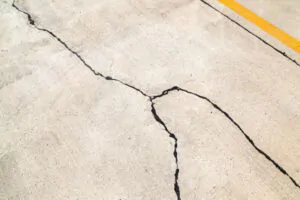
For example, a lower water-cement ratio results in stronger concrete with reduced shrinkage potential. Additionally, using appropriate aggregates that provide good bonding with the cement paste can enhance the overall durability of the concrete structure.
Furthermore, the presence of air-entraining agents can improve freeze-thaw resistance by creating small voids in the concrete that accommodate expansion during freezing. Admixtures such as plasticizers help to reduce water content without compromising workability or strength, contributing to crack prevention.
Therefore, understanding how these factors interplay is essential for creating durable and crack-resistant concrete structures.
How Poor Practices Lead to Cracks
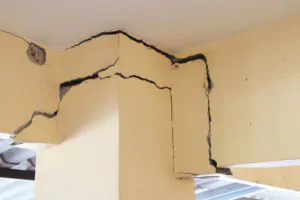
Poor practices in concrete work, such as inadequate mixing, improper curing, or insufficient compaction, result in weakened concrete. Over-watering the mix or adding too much water on the surface can lead to a higher water-to-cement ratio and a weaker final product.
Neglecting proper curing procedures, like keeping the surface moist, can also contribute to cracks.
Additionally, using low-quality materials or not following recommended guidelines during construction invites structural issues. Subpar reinforcement placement and alignment errors could compromise the integrity of the concrete foundation.
Ignoring these essential practices increases vulnerability to cracking and reduces the overall durability of your concrete structure.
Strategies to Protect Your Concrete
Use high-quality concrete mix with proper proportions. Incorporate reinforcement like steel or fiber to enhance strength and reduce cracking. Apply curing methods such as keeping the surface moist for a specified period.
Control the rate of drying by using evaporation reducers or windbreaks. Properly compact the concrete and avoid overworking it to prevent segregation and bleeding during placement.
Regularly inspect and maintain the concrete to identify any potential issues early on, addressing them before they escalate further. Utilize control joints in large slabs to create weakened areas that control the location of cracks, minimizing their impact on the structure’s overall integrity.
Detecting and Diagnosing Concrete Cracks
Inspect your concrete regularly for cracks, using a flashlight to search for hairline cracks or larger fissures. Look closely at areas where two different materials meet, like around door and window frames or expansion joints.
When diagnosing cracks, note their location, size, and shape; these factors can signify the underlying cause of the issue. Surface cracks may indicate minor troubles like shrinkage cracking, while wider or diagonal fractures could suggest more serious structural problems that require immediate attention.

Utilize high-quality epoxy or polyurethane sealants to fill in small cracks before they worsen. Larger or deep-seated fractures may necessitate expert evaluation and repair by a professional concrete contractor to halt further damage.
Our Professional Expertise for Concrete Crack Prevention and Repair
Benefit from our in-depth knowledge and experience to address any type of concrete cracking, from plastic shrinkage cracks to structural cracks.
Trust us to employ advanced techniques and high-quality materials for lasting solutions. Gain peace of mind knowing that your concrete surfaces are in capable hands with our professional concrete services.
Count on our proven methods and skilled professionals to diagnose, treat, and prevent concrete cracks efficiently. Let us handle your concrete maintenance needs with precision and care.
From thorough inspections to tailored repair plans, we offer comprehensive solutions to ensure the longevity of your concrete structures.

